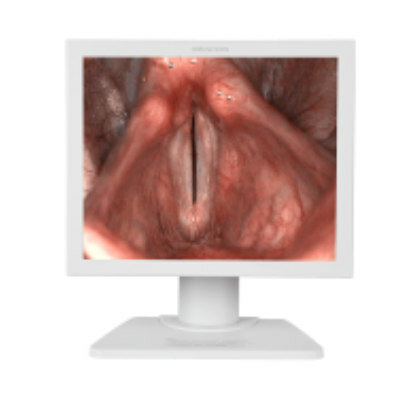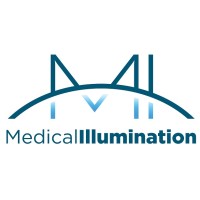Quidel Triage Cardiac Panel Facilitates Rapid POC Diagnosis of Chest Pain Patients in ED
|
By HospiMedica International staff writers Posted on 17 May 2022 |

Chest and abdominal pain are the most common reasons that persons aged 15 years and over visit the emergency department (ED). Because both emergency and non-emergency care are provided, symptoms vary widely in their acuity. The ECG is often non-diagnostic with a sensitivity of less than 60%. Atypical symptoms often seen in the elderly, women, and patients with diabetes make the clinical diagnosis even more difficult. Prolonged laboratory results may delay recognition of critically ill patients and initiation of appropriate therapies. It has been shown that quicker treatment times are associated with improved patient outcomes due to an earlier diagnosis. A point-of-care (POC), serial multi-marker testing strategy has been shown to facilitate the rapid diagnosis and management of chest pain patients in the ED.
Quidel Corporation (San Diego, CA, USA) has developed the Triage Cardiac Panel for use in the ED that is FDA cleared to aid in the diagnosis of myocardial infarction. The Quidel Triage Cardiac Panel is a rapid, point of care fluorescence immunoassay used with the Quidel Triage MeterPro. The test is designed to determine the level of creatine kinase MB (CK-MB), myoglobin and troponin I in EDTA anticoagulated whole blood or plasma specimens. This can be used as an aid in the diagnosis of myocardial infarction (injury).
At discharge, it is estimated that as many as 85% of chest pain patients do not have a cardiac diagnosis and myocardial infarction was missed in 2% - 8%. The Quidel Triage Cardiac Panel’s POC multi marker strategy provides meaningful diagnostic information to differentiate acute myocardial infarction (AMI) from other cardiac abnormalities. It has a near perfect NPV (99.9%) that allows for rapid rule out and the potential to decrease ED Length Of Stay (LOS) and turnaround time (TAT). It also has the potential to increase the number of stays less than 24 hours (decreases unnecessary admissions), thereby improving clinical, economic and operational outcomes. The test uses plasma or whole blood samples in EDTA and has time to results of about 20 minutes.
A 2008 retrospective analysis from three HCA hospitals tested chest pain patients using the Quidel Triage Cardiac Panel at one to three hour intervals. Rule-in criteria were (1) any TnI above the AMI cutoff on any draw; (2) a 50% increase in myoglobin levels with any detectable TnI on the last draw; or (3) a 50% increase in myoglobin with a concomitant increase in CKMB. In the retrospective study, most patients were safely evaluated and dispositioned in three hours or less. In the same three-hour window, rule-in patients were identified with a clinical sensitivity of 98.1%. Specificity was 98.1%; accuracy 99.7%; the PPV (positive predictive value) was 92.6%, and the NPV (negative predictive value) was 99.9%.
Additionally, a before and after study at a 567-bed teaching hospital demonstrated operational efficiencies gained by implementing the Quidel Triage Cardiac Panel with a zero, two and four hour protocol. The goal of the ED was to expedite the disposition of patients presenting with chest pain symptoms and move patients to the appropriate treatment pathway. The study demonstrated a reduction of 60 patients (36%) coded as DRG 143 (non-specific chest pain), freeing up needed beds in the ED. The average length of stay for the ED was shortened by 122 minutes (31%). Moreover, NSTEMI patients were ruled in more quickly with a 41% reduction in their length of stay.
Related Links:
Quidel Corporation
Latest Critical Care News
- CPR Guidelines Updated for Pediatric and Neonatal Emergency Care and Resuscitation
- Ingestible Capsule Monitors Intestinal Inflammation
- Wireless Implantable Sensor Enables Continuous Endoleak Monitoring
- Pulse Oximeter Index Offers Non-Invasive Guides for Fluid Therapy
- Wearable Patch for Early Skin Cancer Detection to Reduce Unnecessary Biopsies
- 'Universal' Kidney to Match Any Blood Type
- Light-Based Technology to Measure Brain Blood Flow Could Diagnose Stroke and TBI
- AI Heart Attack Risk Assessment Tool Outperforms Existing Methods
- Smartphone Imaging System Enables Early Oral Cancer Detection
- Swallowable Pill-Sized Bioprinter Treats GI Tract Injuries

- Personalized Brain “Pacemakers” Could Help Patients with Hard-To-Treat Epilepsy
- Microscopic DNA Flower Robots to Enable Precision Medicine Delivery
- Origami Robots to Deliver Medicine Less Invasively and More Effectively
- Improved Cough-Detection Technology Aids Health Monitoring
- AI Identifies Children in ER Likely to Develop Sepsis Within 48 Hours
- New Radiofrequency Therapy Slows Glioblastoma Growth
Channels
Surgical Techniques
view channel
Robotic Assistant Delivers Ultra-Precision Injections with Rapid Setup Times
Age-related macular degeneration (AMD) is a leading cause of blindness worldwide, affecting nearly 200 million people, a figure expected to rise to 280 million by 2040. Current treatment involves doctors... Read more
Minimally Invasive Endoscopic Surgery Improves Severe Stroke Outcomes
Intracerebral hemorrhage, a type of stroke caused by bleeding deep within the brain, remains one of the most challenging neurological emergencies to treat. Accounting for about 15% of all strokes, it carries... Read morePatient Care
view channel
Revolutionary Automatic IV-Line Flushing Device to Enhance Infusion Care
More than 80% of in-hospital patients receive intravenous (IV) therapy. Every dose of IV medicine delivered in a small volume (<250 mL) infusion bag should be followed by subsequent flushing to ensure... Read more
VR Training Tool Combats Contamination of Portable Medical Equipment
Healthcare-associated infections (HAIs) impact one in every 31 patients, cause nearly 100,000 deaths each year, and cost USD 28.4 billion in direct medical expenses. Notably, up to 75% of these infections... Read more
Portable Biosensor Platform to Reduce Hospital-Acquired Infections
Approximately 4 million patients in the European Union acquire healthcare-associated infections (HAIs) or nosocomial infections each year, with around 37,000 deaths directly resulting from these infections,... Read moreFirst-Of-Its-Kind Portable Germicidal Light Technology Disinfects High-Touch Clinical Surfaces in Seconds
Reducing healthcare-acquired infections (HAIs) remains a pressing issue within global healthcare systems. In the United States alone, 1.7 million patients contract HAIs annually, leading to approximately... Read moreHealth IT
view channel
Printable Molecule-Selective Nanoparticles Enable Mass Production of Wearable Biosensors
The future of medicine is likely to focus on the personalization of healthcare—understanding exactly what an individual requires and delivering the appropriate combination of nutrients, metabolites, and... Read moreBusiness
view channel
Philips and Masimo Partner to Advance Patient Monitoring Measurement Technologies
Royal Philips (Amsterdam, Netherlands) and Masimo (Irvine, California, USA) have renewed their multi-year strategic collaboration, combining Philips’ expertise in patient monitoring with Masimo’s noninvasive... Read more
B. Braun Acquires Digital Microsurgery Company True Digital Surgery
The high-end microsurgery market in neurosurgery, spine, and ENT is undergoing a significant transformation. Traditional analog microscopes are giving way to digital exoscopes, which provide improved visualization,... Read more
CMEF 2025 to Promote Holistic and High-Quality Development of Medical and Health Industry
The 92nd China International Medical Equipment Fair (CMEF 2025) Autumn Exhibition is scheduled to be held from September 26 to 29 at the China Import and Export Fair Complex (Canton Fair Complex) in Guangzhou.... Read more













